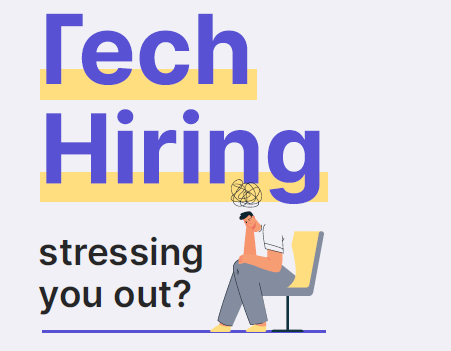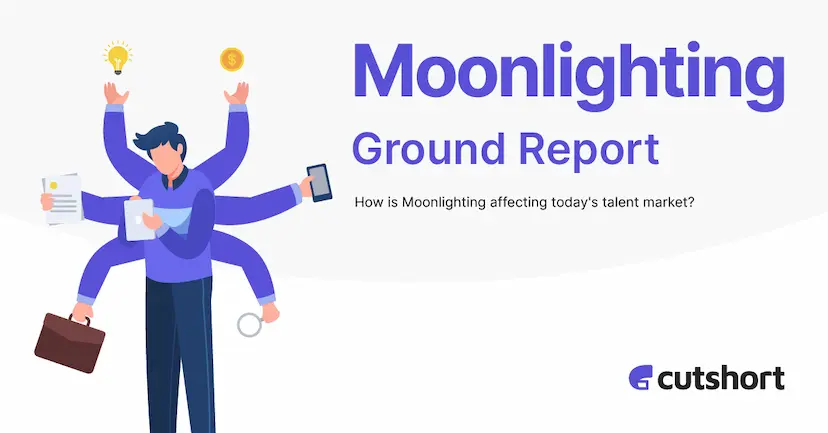Here is a quick hiring guide with our key learnings on how to improve your tech hiring in 2022.
If 2021 was any indication, this year is likely to get tougher for founders and recruiters. At a time when money has stopped being a constraint, many companies are fighting a losing battle.
This is the key problem that we sought to solve all of last year as we worked with thousands of companies across geographies and industries.
Below is a quick hiring guide that we just released. And here is a quick summary of the same.
The Market
In the calendar year 2021, most candidates had three or more offers in less than a month. Meanwhile, companies scrambled to get this limited talent to accept their offers, and hence, salaries upwards of INR 1 Crore a year became a commonplace for senior hires.

Add to this the culture of technology talent shopping around for offers and we saw a joining ratio median of less than 50%! Now, there’s a wave of multinational firms setting up recruiting shops in India to steal away whatever little talent remains in the market. If you are a recruiter trying to build a team from scratch for a pre-funding startup – good luck!
Okay, so things looks to be quite hard. But is there a way out?
Yes, there is. Like all complex and important problems, this one also doesn’t have an easy solution but our research and work with clients and thousands of job-seekers gave us some moments of clarity on the way forward.
For instance, we learned that the talent wars tend to get worse in niches especially when every company is targeting the same pool of talent. Instead, creative companies go out of their way to find untapped segments of candidates and use offbeat tactics to get them onboard. Where are these treasure troves, you ask?
Well, most of the talent demand and recruiting is currently concentrated in the top-tier colleges and cities. Additionally, a lot of job boards and portals are stuffed with the same candidates and spammed with hiring posts from the top three dozen companies.
Meanwhile, there’s a lot of untapped potential that exists in smaller cities and towns – where work from anywhere becomes a value proposition. Similarly, there is merit in expanding the top of the funnel beyond the top tier colleges and looking at the exceptional talent that’s moving careers or functions – a product manager sharpening their programming chops could be more useful than a pure programmer for a growing product firm.
Similarly, offering high salaries or blind outsourcing to recruitment agencies is unlikely to yield results because everyone is likely doing that already and without much success.
So, what are the top five things an organization can do to improve its hiring?
In a nutshell:
Be authentic and don’t overpromise.
Be it BMW bikes or expensive holidays, we have already seen how going beyond one’s means can hurt the company in the long run. Instead, a good thumb rule is to work hard and consistently towards building a company that people would genuinely want to work for and use the power of digital storytelling with a dash of creativity to spread the word.
Looking for more? Here we go!
Competency & Potential > Pedigree
The talent shortage is very real but can be compressed to a large extent only if recruiters open up their doors to candidates that show skill, competency, and potential instead of just going for pedigree talent from top institutes. This can drastically increase the talent pool and further reduce the possibility of last-minute declines or performance mismatches.
Build and communicate EVP
While all companies are gung-ho about the employer branding piece right now, it isn’t actually very complicated and doesn’t need to be a five-year plan either. Companies can actually start small and cover the basic interview process, and the perks of working at the company. These when advertised and communicated as part of the hiring process can work wonders in both improving the conversion rate of good-fit candidates and reducing false positives from the process.
Reduce and eliminate expectations mismatch
A lot of candidates drop off the process or just don’t show up after accepting offers when they realize that the company isn’t a good fit for them. To reduce such drop off, recruiters must proactively ensure that the company isn’t as promising as the moon and at the same time, covering the bases such as providing a deeper peek into the company culture, communicating the impact, and even arranging candid interactions with existing employers before the interview process begins.
Upgrade stacks and culture, in parallel
It’s not enough to just go about town tooting one’s horn. They say that good marketing makes bad products fail faster and it’s certainly true for recruitment too. Companies should make prompt attempts to migrate to the most cutting-edge technology stacks that excite incoming talent. At the same time, they should build a healthy, supportive culture that stands out instead of making the same old orthodox organization seem modern by exaggerating online.
Most humans can smell inauthenticity from a mile away and no amount of compensation can cover reputation and faith once lost.
Go hybrid if not completely remote
Our findings show that 60% of the tech talent candidates want to work from home at least two days a week. Meanwhile, 40% of candidates can go one step further and want to work remotely forever.
This has two implications. One, it’s clear that companies that insist on 5-days-in-office will find themselves out of favor with the talent that’s used to and prefers working remotely. Second, it also means that the talent pool is progressively reducing for physical-only companies as other companies move towards fully remote or at least hybrid work arrangements.
Hence, a good first step would be for companies to evaluate their workflows and implement a hybrid/remote working roadmap that incentivizes the good talent to join.
Want to get cracking? Here is the quick hiring guide you can download.
If you made it here, we’re sure you’d love to get your hands on this special e-book that also carries an exclusive Salary Reckoner that provides a handy benchmark for compensation. Not just this, this e-book also comes with dozens of ideas and insights that can help you attract the right talent – fast. Click the button below to get access!





